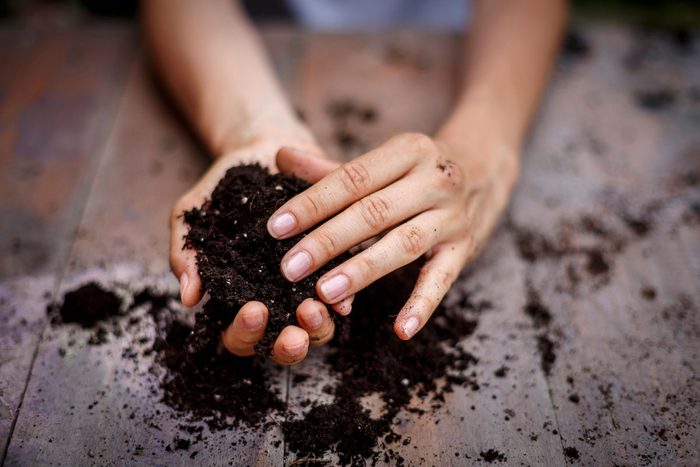What’s the Difference Between Potting Soil and Potting Mix?
Updated: Mar. 06, 2023

The two popular garden products are similar, but not the same. Here's when to buy one over the other.
Newbie gardeners can easily become confused in the aisles of their favorite garden center. Why does every bagged product have a variation on the same name?
“Potting soil” and “potting mix” sound similar. But just as novice bakers know the difference between baking soda and baking powder, first-time gardeners should understand why the two potting products aren’t the same.
On This Page
Potting Soil and Potting Mix: What’s the Difference?
Potting soil
What’s in it: Potting soil contains garden soil, minerals and organic matter, says Karen Bachman Thull of Bachman’s Floral, Gift & Garden, a Twin Cities-based garden company. It’s not considered sterile, which means it may contain pathogenic fungi or other diseases, as well as weed seeds. It also contains compost.
How it’s used: Despite “potting” in the name, think outside the pot. “For non-container gardening and landscape use, potting soil is usually fine,” says Bachman Thull.
Weight: Potting soil is dense and heavy. Dr. Tony Provin, a soil chemist and professor at Texas A&M University, wryly says you’ll certainly notice the difference between potting soil and the lighter potting mix if you’re trying to pack 130-pound bags of the former into the back of a Prius. Here, find out the difference between the garden and potting soil.
Things to know: Because it contains soil and sometimes sand, potting soil can become compacted, dense and water-soaked, according to Bachman Thull. While potting soil might contain a good amount of nutrients from compost, gardeners will still have to add other amendments to improve the overall soil texture and drainage. “Don’t be afraid to take soil and amend it, to meet in the middle (between potting soil and potting mix),” Provin says.
Potting mix
What’s in it: For one thing, no soil. According to Bachman Thull, potting mix “contains organic and inorganic components to improve aeration and drainage, peat moss, aged bark, coir, pumice, perlite (and) vermiculite,” as well as slow-release starter fertilizer. It is considered sterile, meaning it does not contain weed seeds, insects or diseases.
How it’s used: Potting mix is a favorite for container gardening, indoor and outdoor potted plants, and seed starting, Bachman Thull says. “The combination of ingredients ensures that the mix retains moisture and won’t compact, so there is enough air space for tender roots to grow,” she says. “A potting mix is a much more controlled growing medium than potting soil.”
There are also varieties of potting mix for certain plants, such as African violets and succulents and cactus, to meet those plants’ special needs.
Weight: The components of potting mix make it lightweight and fluffy. That can certainly make things easier if you’re filling a number of flowerpots. “The (lighter) weight alone would be the number one thing (that appeals to gardeners),” Provin says.
Things to know: While the names of all of those extra components may not be household words (coir, for example, is fibrous material from coconut husks), they are there for similar reasons, Provin says. The add-ins serve as bulking agents, preventing heavy water saturation. Different companies use different blends of materials. The ingredients should be listed on the bag.
Overbought? No Worries
Bought more potting soil or mix then you need? Just store it carefully until you need it again. “Keep it dry, it will be just fine,” Provin says.
Pro tip: You can reuse potting mix and potting soil, unless it has been in a pot with a diseased plant.
